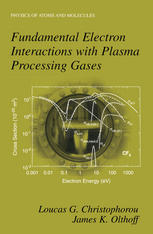

Most ebook files are in PDF format, so you can easily read them using various software such as Foxit Reader or directly on the Google Chrome browser.
Some ebook files are released by publishers in other formats such as .awz, .mobi, .epub, .fb2, etc. You may need to install specific software to read these formats on mobile/PC, such as Calibre.
Please read the tutorial at this link: https://ebookbell.com/faq
We offer FREE conversion to the popular formats you request; however, this may take some time. Therefore, right after payment, please email us, and we will try to provide the service as quickly as possible.
For some exceptional file formats or broken links (if any), please refrain from opening any disputes. Instead, email us first, and we will try to assist within a maximum of 6 hours.
EbookBell Team

4.3
98 reviewsThis volume deals with the basic knowledge and understanding of fundamental interactions of low energy electrons with molecules. It pro vides an up-to-date and comprehensive account of the fundamental in teractions of low-energy electrons with molecules of current interest in modern technology, especially the semiconductor industry. The primary electron-molecule interaction processes of elastic and in elastic electron scattering, electron-impact ionization, electron-impact dissociation, and electron attachment are discussed, and state-of-the art authoritative data on the cross sections of these processes as well as on rate and transport coefficients are provided. This fundamental knowledge has been obtained by us over the last eight years through a critical review and comprehensive assessment of "all" available data on low-energy electron collisions with plasma processing gases which we conducted at the National Institute of Standards and Technology (NIST). Data from this work were originally published in the Journal of Physical and Chemical Reference Data, and have been updated and expanded here. The fundamental electron-molecule interaction processes are discussed in Chapter 1. The cross sections and rate coefficients most often used to describe these interactions are defined in Chapter 2, where some recent advances in the methods employed for their measurement or calculation are outlined. The methodology we adopted for the critical evaluation, synthesis, and assessment of the existing data is described in Chapter 3. The critically assessed data and recommended or suggested cross sections and rate and transport coefficients for ten plasma etching gases are presented and discussed in Chapters 4, 5, and 6.